Can Fleas Fly? Understanding Their Biology and Behavior
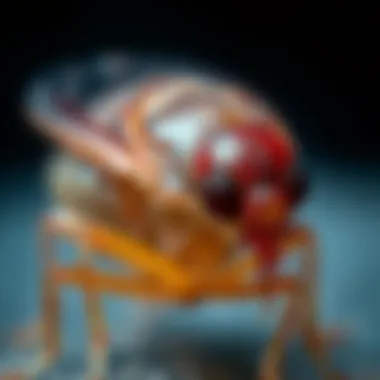
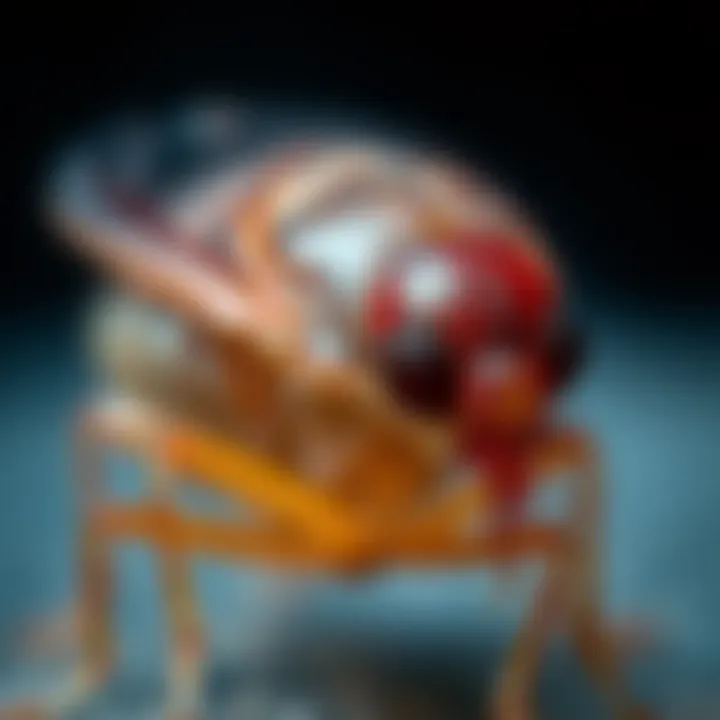
Intro
Fleas are a common annoyance in households worldwide, notorious for their ability to cause discomfort and irritation to pets and humans alike. However, a prevalent question lingers: can fleas fly? While many might assume that these pests can soar through the air, the reality paints a different picture. In this article, we will explore the unique biology and behaviors of fleas, their impressive jumping capabilities, and how they have adapted to their environment over time.
Understanding whether fleas can fly not only satisfies a curiosity but also informs pest control measures that aim to combat flea infestations effectively. With insights drawn from both scientific research and practical pest management strategies, this article serves as a comprehensive guide for homeowners, pest control professionals, and students of entomology alike.
Pest Identification
Before diving into the specifics of fleas and their behaviors, it’s vital to recognize how to identify these pesky intruders. Understanding what fleas look like and the signs of an infestation can aid in quicker responses and effective management.
Common Household Pests
Fleas are often mistaken for other small insects due to their size and shape. They are tiny, usually about 1/8 to 1/16 of an inch in length, with a laterally compressed body that allows them to navigate through fur or feathers effortlessly. Common types found in households include the cat flea, dog flea, and the human flea. Each type shares similarities but can vary in host preferences and behaviors.
Signs of Infestation
If you suspect fleas are making themselves at home, keep an eye out for several telltale signs:
- Bites on Skin: Small, red, itchy bumps often appear in clusters, especially on the ankles and legs.
- Flea Dirt: Black specks found in pet fur or bedding are flea feces, made up of digested blood.
- Adult Fleas: Spotting the adult fleas can be tricky, but brushing your pet’s coat or using a white towel may help you catch these jumpers in action.
- Pets' Behavior: Excessive scratching or grooming can indicate a flea infestation. Pets may exhibit anxiety or restlessness as the itchiness intensifies.
Understanding flea identification can significantly aid in early detection and effective pest management strategies.
Being aware of these signs not only alleviates discomfort for your pets but also ensures your home remains pest-free. Awareness is the first step in controlling a flea problem before it spirals out of hand, affecting both your living space and your furry companions.
Preface to Fleas
Fleas are small, agile insects that often plague the pets and homes of many households. Their presence can cause discomfort, allergic reactions, and a myriad of health issues for both animals and humans alike. Understanding these critters—especially in terms of their biology and behavior—offers essential insights for effective management and control. This article aims to delve into the nitty-gritty of fleas, from their defining characteristics to the role they play in various ecosystems, ultimately laying the groundwork for pest control strategies that homeowners can employ.
Defining Fleas
A flea is a tiny, wingless insect belonging to the order Siphonaptera. They are notorious for their adaptability and ability to thrive in a wide range of environments. Typically, adult fleas measure about 1.5 to 3.3 millimeters in length. They have flattened bodies that enable them to navigate through the fur of their hosts with ease. Their mouthparts are uniquely adapted for piercing the skin and sucking blood—making them not merely nuisances but also vectors for various diseases.
Key characteristics include:
- Color: Ranging from dark brown to reddish-brown, which helps them blend into their surroundings.
- Life Cycle: Understanding their life cycle is crucial. Fleas undergo four stages: egg, larva, pupa, and adult. Each stage has its own habitat preferences, which complicates control efforts.
- Feeding: Only adult fleas feed on blood, but larval fleas depend on organic debris and flea feces.
These defining features make fleas uniquely suited to their parasitic lifestyles, driving the obsession to unravel their secrets and behaviors.
Fleas in the Ecosystem
Fleas play a significant yet frequently overlooked role in ecosystems. Though pesky to humans and pets, these critters are integral to the food web. They serve as a food source for various birds, reptiles, and small mammals.
- Fleas contribute to nutrient cycling: Their waste products enrich the soil, promoting a healthy environment for plant growth.
- Symbiotic Relationships: Certain parasites rely on fleas as a method of transit or as hosts themselves—an interesting twist in the tale of parasitism.
- They can affect the population dynamics of other species, potentially leading to a cascade effect in ecosystems. High flea populations can lower the health of their hosts, influencing the community structure over time.
Understanding how fleas fit into the bigger picture allows for a more comprehensive approach to pest control. Recognizing their ecological function can guide management practices that minimize harm to the surrounding environment while effectively reducing flea populations in homes.
Anatomy of a Flea
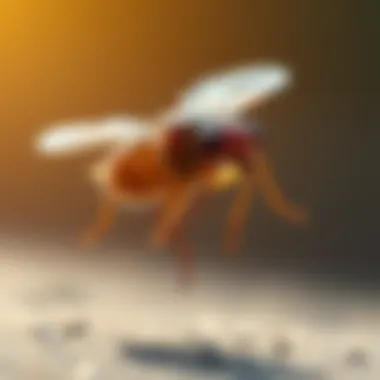
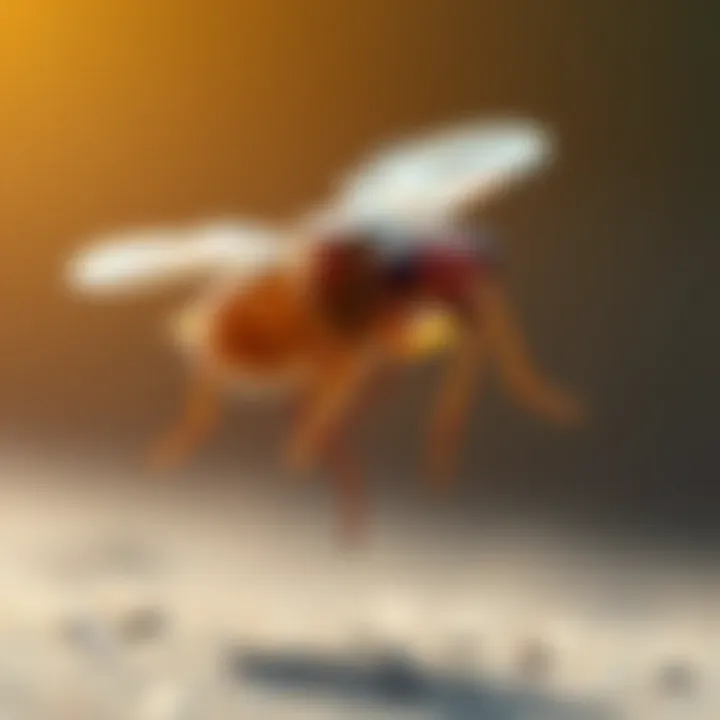
Understanding the anatomy of a flea is paramount to grasping their role in ecosystems and their behavior as pests. Each part of their body has evolved specifically to cater to their lifestyle, predominantly their blood-sucking needs. To truly appreciate these creatures, it's essential to break down their structure into digestible pieces. By comprehending their biology, one can better navigate the methods for managing their populations effectively.
Body Structure
Fleas are tiny yet formidable creatures, generally measuring about 1.5 to 3.3 millimeters in length. Their body has a laterally compressed shape, which allows them to move swiftly through the fur of their hosts, be it a dog, cat, or any other warm-blooded animal. This streamlined body shape makes it easier for them to navigate the dense hair or feathers of their hosts, minimizing the chances of being brushed away.
Additionally, their exoskeleton is tough and highly resistant, offering protection against environmental hazards and aiding in evasive maneuvers when prey is nearby.
Another noteworthy feature is their coloration. Shades of brown and black typically cloaked their bodies, allowing them to blend into their surroundings—usually a furry victim or the damp areas where they breed. Their exterior isn’t just for show; it serves as armor against potential predators and provides camouflage, which is crucial for their survival.
Legs and Jumping Mechanism
The legs of a flea are a marvel of evolutionary engineering. Equipped with powerful muscles, fleas can leap over 200 times their body length; a feat that’s nothing short of remarkable. For perspective, it's akin to a human jumping the length of a football field in a single bound.
- Structure of the Legs: Their hind legs are significantly elongated compared to the front ones, making them perfectly adapted for jumping. The resilience of their joints absorbs the energy needed for the leap.
- Energy Storage: When preparing to jump, a flea can store energy in the flexible protein structure of its exoskeleton, similar to how a compressed spring works. When released, that energy catapults them into the air.
These legs aren’t just for show—they’re vital for their survival. In a natural enemy-rich environment, the ability to leap away from danger increases their chances of survival immensely. When they feel threatened, they can spring away at astonishing speed, seeking shelter and a new meal as quickly as possible.
"Understanding the pesky flea's anatomy can help you figure out the best ways to nip a potential infestation in the bud before it jumps away from control."
For further reading, you might explore detailed articles on Britannica or check out some discussions on Reddit.
In the next section, we will delve deeper into the intriguing movement patterns of these pests.
The Question of Flight
In this exploration of fleas, the topic of flight looms large. Most people don’t picture fleas soaring through the air like butterflies; rather, they think of these pesky little bouncers hopping around. That said, considering whether fleas can really fly taps into some interesting biological and behavioral aspects of these insects. The ancient adage, “Curiosity killed the cat, but satisfaction brought it back,” rings true here. Understanding why fleas can’t fly, even though many assume they might, provides clarity on their adaptability and overall survival strategies.
Examining whether fleas have wings, and understaning their jumping abilities, highlights their evolutionary path. It’s not just about confirming facts; it’s about grasping the implications for dealing with these pests, whether in homes or in broader ecosystems. Homeowners and pest control experts alike benefit from decoding these little critters’ movement patterns. Sometimes, knowledge is indeed power when it comes to managing infestations!
Do Fleas Have Wings?
When one first ponders the flying capabilities of fleas, the immediate follow-up question often concerns their anatomy. Simply put, fleas do not have wings. While this might come as a surprise—given their small size and what feels like swift, flight-like movements—the truth is more astonishing. These insects are classified under the order Siphonaptera, which describes their unique adaptations but also their lack of flight structures.
Instead of wings to rely on, fleas evolved a remarkable leaping mechanism. Without any flapping to assist them, fleas rely entirely on their muscular legs. The body of an adult flea is built to withstand the stress of these jumps. With their compresible body, fleas can spring with monumental force—some species can achieve jumps exceeding 200 times their body length! This method of movement is highly effective for both escaping predators and locating new hosts, proving their adaptation to a life close to animals and their blood supply. Thus, while they might not take to the sky, their incredible jumps are a true display of nature’s ingenuity.
Flapping vs. Jumping
The distinction between flapping and jumping holds significance in understanding flea mobility. While many insects utilize wings for sustained flight, fleas use a combination of power and precision in their jumps. Jumping allows fleas to change position quickly and often evades threats efficiently. One could say, in the game of hide and seek, fleas have mastered the art of surprise!
In terms of mechanics, the process behind a flea’s jump is absolutely fascinating. They store energy in special pads located on their legs. It’s quite similar to how a coiled spring functions. When a flea is ready to jump, it builds tension in these pads until it can no longer hold the energy back. When released, it springs into the air, leveraging powerful muscles to achieve astounding heights.
Interestingly, their jumping method enables them to reach maximum heights and distances relative to their size, offering protection against potential threats, like other insects or larger animals. The jump also plays a crucial role in the critters' parasitic lifestyle, allowing them to latch onto hosts quickly. In summary, while fleas aren’t flying in the traditional sense, they possess incredible adaptations that suit their lifestyle; jumping is their ticket to elusive survival.
Flea Movement Patterns
Flea movement patterns are a fascinating aspect of their biology, as it combines innate instincts with physical capabilities. Understanding how fleas navigate their environment is crucial not just for academic interest, but also for practical pest control measures. Just as a river bends its course, allowing for smooth navigation, fleas' jumping abilities provide them with a unique method of movement, enabling them to evade predators and find hosts. This section seeks to illuminate the significance of these patterns, providing insights that are invaluable for homeowners and pest professionals alike.
How Far Fleas Can Jump
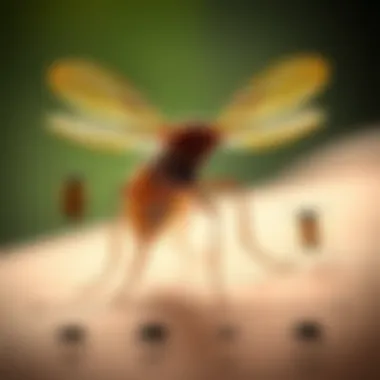
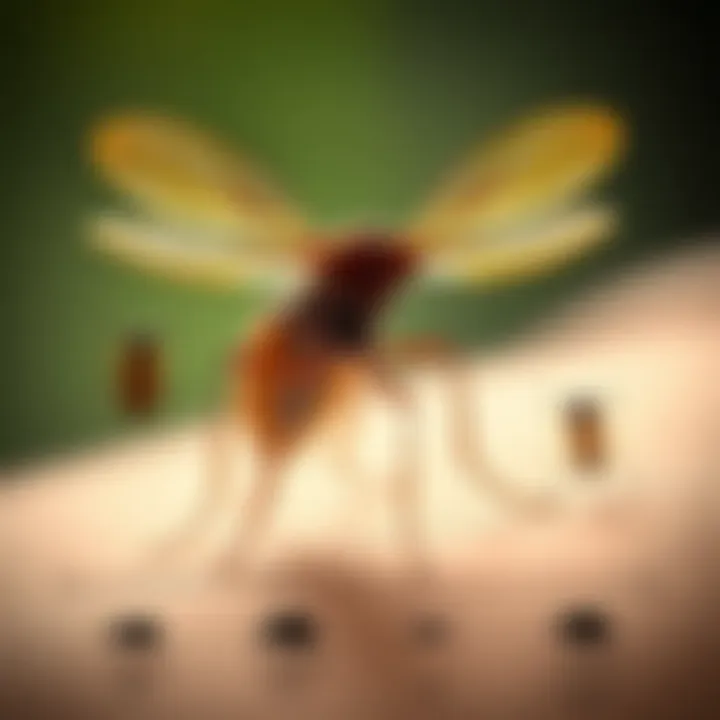
Fleas are renowned for their remarkable leaping capabilities. A healthy flea can jump up to seven inches vertically and can leap up to thirteen inches horizontally. This is quite exceptional, considering the size of these tiny creatures. To put it into perspective, if a human could jump like a flea, it would equal a leap of over 300 feet! Such distance is not merely for show; it serves as a survival tactic, allowing them to quickly escape threats and access hosts for feeding.
Their ability to jump long distances makes them resilient survivors, capable of navigating complex environments. Yet, this impressive talent also underscores a common challenge for homeowners—flea infestations can spread rapidly as these pests hop from one host to another or leap across floors and carpets.
- Distance Capabilities
- Vertical jump: up to 7 inches
- Horizontal jump: up to 13 inches
The Mechanics of Their Jumps
The mechanics of a flea's jump is a remarkable study of nature's engineering. Fleas do not have wings; they rely wholly on their powerful hind legs for the leap. A flea's legs are structurally adapted to store energy effectively.
When a flea prepares to jump, it compresses its flexible leg muscles much like a spring mechanism. When released, this stored energy propels the flea into the air with astonishing force. The precision with which a flea can control its jump allows it to land accurately on its hosts, mostly mammals, where it can then feed.
The entire process involves multiple muscles, tendons, and joints working in unison.
- Key Components in Flea Jump Mechanics
- Coxae: The joints that connect the hind legs to the body, acting like a spring that bears the tension before release.
- Femur: The thigh of the flea, which is robust and designed to endure substantial pressure.
- Tibia and Tarsus: These parts create a lever system that helps in push-off for the leap.
Interestingly, fleas can control the angle and force of their jump. By adjusting their muscular tension before takeoff, they can determine how far to leap, which is crucial for evading potential threats in their environment. Thus, the mechanics of their jumps represent not just a biological marvel but a strategic advantage in their survival.
Evolutionary Perspective
The evolutionary aspect of fleas is vital when it comes to understanding their impressive adaptations and behaviors. By analyzing their evolution, we can appreciate how these small yet formidable pests have thrived in various environments. This understanding sheds light on why fleas are such effective parasites and allows for better pest control strategies.
Evolution of Flea Adaptations
Fleas have undergone significant changes over millions of years. Their evolutionary journey illustrates how adaptation is not just about survival, but also about excelling in a competitive ecosystem. The flea's flat body is a prime adaptation, enabling it to navigate through the fur of its hosts effectively. This shape reduces resistance as they move, allowing them to reach the skin without hassle.
Moreover, the jumping mechanism of fleas demonstrates a fascinating evolutionary leap. Fleas possess a unique protein called resilin that stores energy, which lets them leap great distances relative to their size. Some species can jump vertically over a foot — a remarkable feat that is crucial for evading threats and finding new hosts. This adaptation ensures fleas can thrive in varied habitats, from homes to wild terrains.
A crucial aspect of fleas' evolution pertains to their reproductive strategies. Fleas have adapted reproductive traits that ensure a successful lifecycle. For instance, a female flea can lay hundreds of eggs, sometimes laying up to 50 eggs per day. These adaptations illustrate an evolutionary response to the high mortality rates fleas face; they compensate through sheer numbers, ensuring that enough offspring survive to continue the species.
Comparison With Other Insects
Fleas stand apart from many other insects, particularly when one weighs their jumping ability against the flying abilities of other insects. Unlike flies, mosquitoes, or butterflies, fleas do not possess wings; instead, they rely on their powerful legs to navigate and survive. Their body structure and movements are uniquely specialized for a parasitic lifestyle, setting them apart from insects that take to the air.
In this light, it's interesting to consider how different insects evolved based on their environment and lifestyle. For example, while moths have adapted to nocturnal lifestyles with specialized sensory organs to avoid predators, fleas are geared specifically towards parasitism. They have developed strong mouthparts to pierce skin and consume blood, unlike other insects that may feed on nectar or plant material.
This divergence highlights how evolution works as a response to ecological niches; fleas have become masters of their domain without the need for flight, relying instead on their remarkable jumping ability and reproductive strategies. Thus, the evolutionary journey of fleas places them in an especially fascinating context within the broader landscape of insect life. Their unique features and behaviors give insights that can help in crafting effective pest management strategies, as understanding evolutionary traits aids in predicting their movements and habits.
In summary, evolution not only shapes the biological makeup of fleas but also dictates their behaviors and interactions within ecosystems. Knowing their evolutionary background is essential for anyone looking to understand, or manage, these resilient pests.
Implications for Pest Control
When it comes to dealing with fleas, understanding their biology and behavior becomes crucial. Fleas may not be able to fly, which might lead some to underestimate their ability to invade homes and infest pets. However, the implications of their biological traits influence pest control methods significantly. Knowing how they operate, where they thrive, and how to effectively manage their populations can save homeowners a lot of headaches.
Understanding Flea Behavior
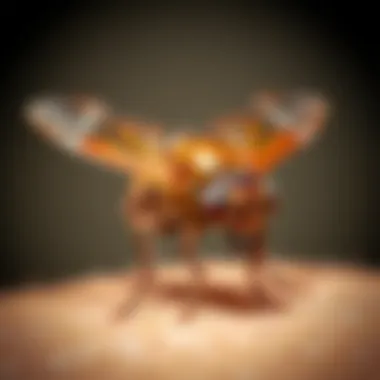
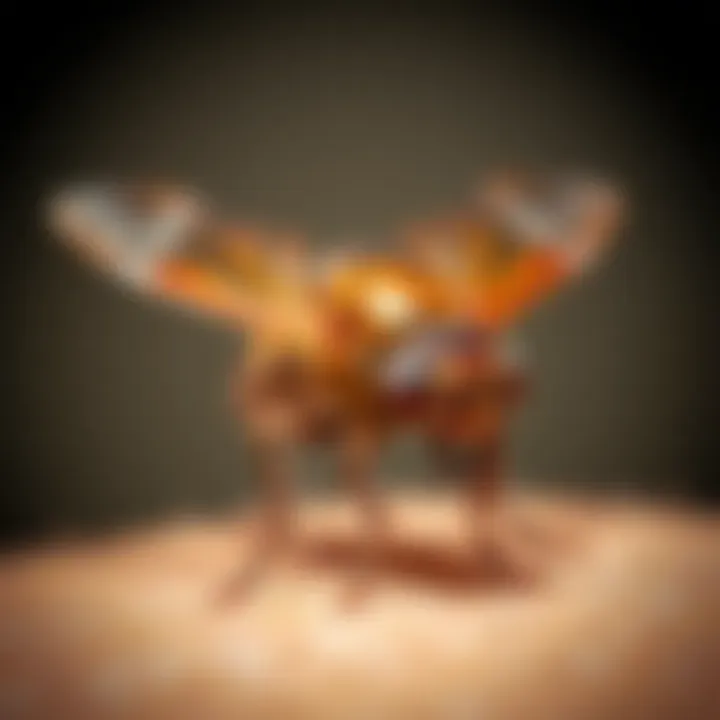
Recognizing the behaviors of fleas plays a critical role in effective pest control. Fleas are parasites, and their behavior is largely dictated by their need for a host to feed on. They are adept at navigating their environment, using their jumps to reach hosts. Households often see fleas during warmer weather as these pests are more active in higher temperatures and humidity levels.
- Feeding Patterns: Fleas typically require blood meals every few days, which means they are always on the lookout for their next host. Understanding this behavior can help homeowners realize the importance of regular treatments and preventive measures, such as flea collars for pets.
- Breeding Habits: Fleas can reproduce rapidly. A single female flea can lay hundreds of eggs in her short lifespan. These eggs often fall off the host and settle into carpeting or bedding, contributing to ongoing infestations. Keeping a clean environment is key to disrupting this breeding cycle.
- Habitat Preferences: Fleas prefer warm, dark areas where they can hide and thrive. This can be under furniture, within carpet fibers, and even inside pet bedding. Knowing where to focus cleaning efforts can help reduce flea populations effectively.
Effective Management Strategies
Combating a flea infestation can be a hassle, but leveraging an understanding of flea behavior allows homeowners to adopt smarter management strategies. Here are some practical methods:
- Regular Cleaning: Vacuuming regularly and washing pet bedding can help eliminate eggs and larvae. Be sure to vacuum areas where the pets spend time. After vacuuming, dispose of the bag or empty the canister outside to prevent reinfestation.
- Pest Control Products: Utilizing pet-friendly insecticides or topical treatments specifically designed for fleas can significantly minimize their numbers. Look for products that contain IGR (insect growth regulators) to disrupt the flea life cycle.
- Yard Maintenance: Fleas can also thrive outdoors, so keeping the garden tidy helps. Mowing regularly, trimming bushes, and using flea treatments in the yard can reduce the chances of pets bringing fleas into the house.
- Professional Help: If the infestation is severe, it may be wise to call in pest control experts who can assess the situation and recommend a comprehensive treatment plan.
Understanding fleas and implementing these strategies not only helps in effectively managing an infestation but also provides peace of mind. A well-informed approach can reduce the reliance on chemical treatments, leading to a healthier environment for both pets and people.
"An ounce of prevention is worth a pound of cure." Keeping your home flea-free starts with understanding their habits and taking proactive measures.
For further reading on pest control methods and management, check out resources from CDC and University of Florida's IFAS for research-backed methods.
Common Myths About Fleas
Understanding fleas often gets muddled due to common myths that circulate among homeowners and pet owners alike. These misconceptions can lead to improper pest control approaches and unnecessary worry. By examining these myths, we can clarify the actual behavior and biology of fleas, paving the way for more effective management strategies. It’s crucial to differentiate fact from fiction to navigate the world of flea control effectively.
Flying Flea Myths
One of the most persistent myths surrounding fleas is the belief that they can fly. While it sounds plausible, it’s simply not true. Fleas are equipped with powerful legs that enable them to jump incredible distances relative to their size, but they lack wings altogether. This might leave some folks scratching their heads, thinking, "If they can jump so high, why not fly?"
The jumping mechanism of a flea is quite fascinating, leveraging a protein called resilin, which functions like a spring. When a flea jumps, it can leap over obstacles and move quickly from one host to another. To clarify: they can soar to impressive heights, with some species capable of jumping up to 7 inches high, but they do it all without wings. This misunderstanding may stem from their quick movements and unexpected leaps, making it easy for someone to mistake it for flight.
In reality, thinking of fleas as flying insects can lead to ineffective treatment methods. Many may assume that insecticides best suited for flying pests will work against fleas, but that’s not the case. Instead, focusing on their unique jumping ability and life cycle is crucial for effective control.
Other Misconceptions
In addition to the flying myth, there are several other common misconceptions about fleas. One notable myth is that fleas can only live on pets. While it’s true that pets like cats and dogs often serve as hosts, fleas can infest various environments, including your carpets, bedding, and even yards. They won't discriminate against where they find a suitable host to reproduce and feed on blood.
Another widespread idea is that fleas are a seasonal pest. Many assume that these pests only become a problem during warmer months. However, fleas can survive in various climates, and their eggs can remain dormant for long periods. This means that homeowners must remain vigilant year-round, especially in areas where temperature changes do not significantly affect pest activity.
Additionally, there’s the notion that all fleas are the same. In reality, there are over 2,500 species of fleas globally, with the cat flea being the most common in households. Different species may have variations in behavior, host preferences, and even treatment efficacy. Understanding the specific type of flea infesting your home can guide you towards the most effective management or extermination strategies.
“Knowing the truth about fleas is the first step toward effective pest control.”
As you can see, clearing up these misconceptions helps form a solid foundation for understanding these pests. Awareness is key; it empowers homeowners to take informed actions tailored to the specific nature of their flea problem and to act promptly when dealing with infestations.
Ending
In summarizing the fascinating world of fleas, it’s crucial to reflect on the key insights gained throughout this exploration. Fleas, despite their minuscule size, possess remarkable biological adaptations and behavioral traits that play a significant role in their ecosystem. Understanding these intricacies is imperative, especially for homeowners and pest control professionals trying to manage flea populations effectively.
Summarizing Key Points
- Flea Structure: Fleas are designed for survival. Their sleek bodies and unique anatomical features allow them to thrive in their environments.
- Jumping Ability: The incredible jumping capabilities of fleas make them formidable pests. They can leap many times their body length, which aids in their dispersion and feeding habits.
- Misconceptions: Many myths surround fleas, particularly the idea that they can fly. This article clarifies that while they can't fly, their jumps often confuse untrained observers.
- Pest Management: A thorough understanding of flea behavior aids in developing efficient pest control strategies, ensuring that homeowners can protect their spaces better.
Aspects such as flea anatomy, movement, and adaptive behavior hold importance not only for a deeper understanding of insects but also for practical applications in pest management. The knowledge shared here emphasizes a thoughtful approach to dealing with these pests, enhancing the quality of life within our homes.
Final Thoughts on Flea Mobility
The question of flea mobility goes beyond mere curiosity. Fleas are so well-adapted to their environments that they have become an expert in survival tactics. Understanding how they navigate their world informs better pest control practices and elevates our approach towards fostering healthier living conditions.
Fleas might not soar through the skies like other insects, but their jumping prowess is a testament to their resilience and adaptability. As we learn to coexist with these tiny creatures, knowledge remains our most effective tool in tackling infestations. Maintaining a keen awareness of their behaviors can be beneficial in devising effective management strategies. Whether shielding our homes or simply appreciating the complexities of nature, understanding fleas is a step towards safeguarding our health and environments.















